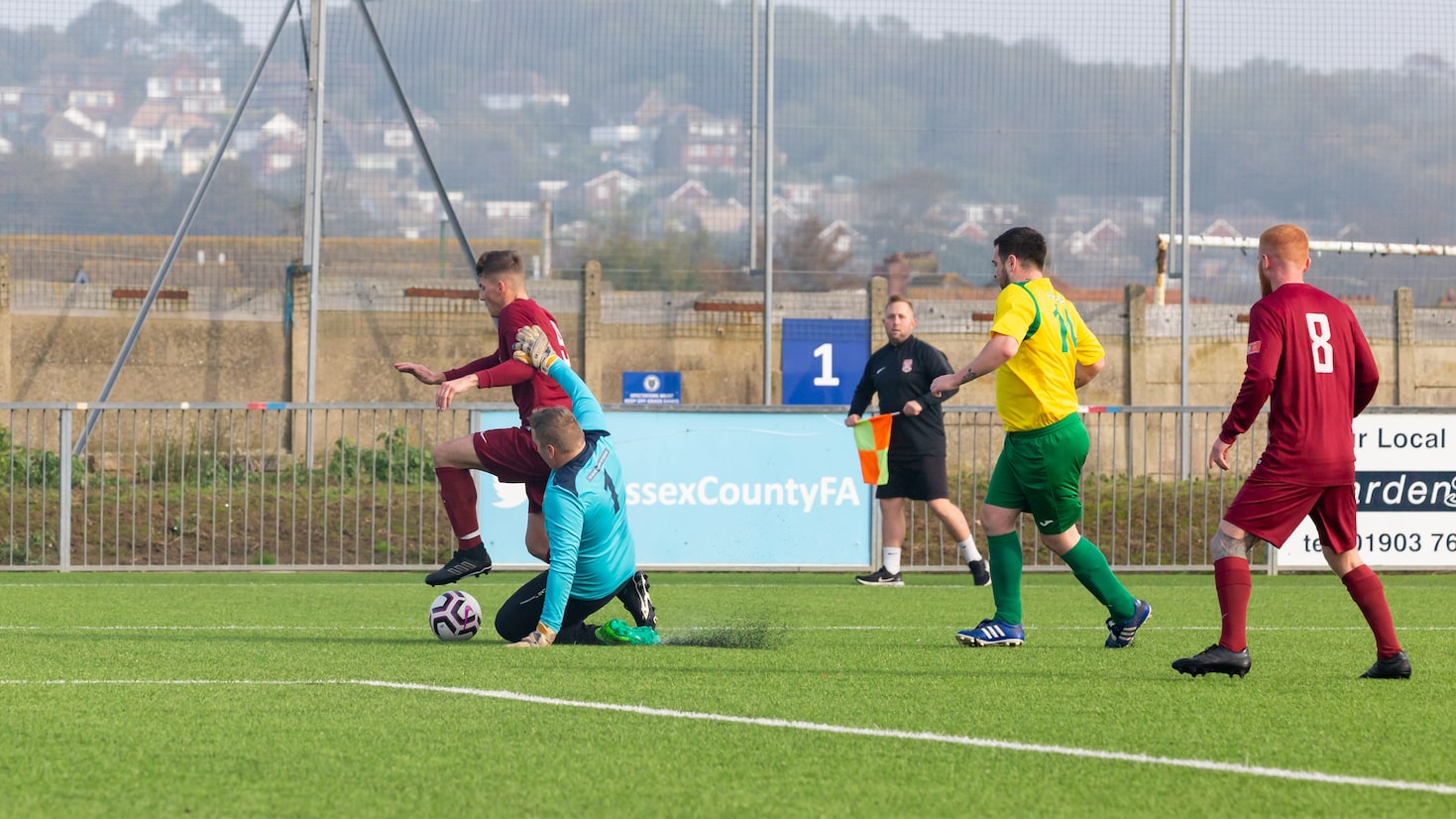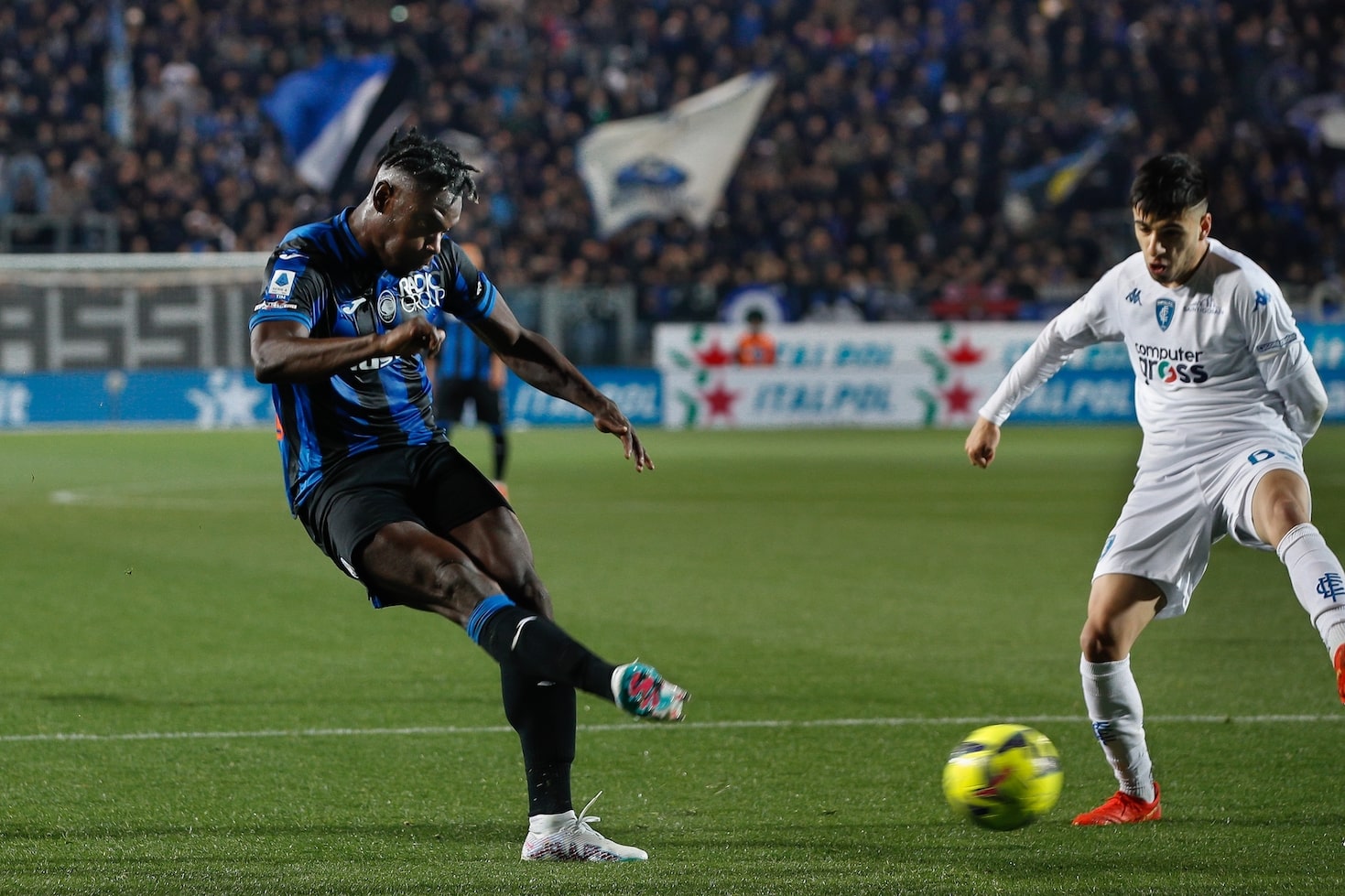Soccer Striker Position
The striker position in soccer is one of the most critical positions on the field. Often referred to as the forward position, the striker is responsible for scoring goals and creating scoring opportunities for their team. A successful soccer team needs an effective striker who is skilled in both finishing and creating chances for their teammates. In this blog post, we'll delve deeper into the role of a striker in soccer, the characteristics of a good striker, and some strategies for coaches to help their strikers succeed. So, whether you're a coach or a player looking to improve your game, read on to learn more about this essential position in soccer.
Soccer Striker
The Role of a Striker
The primary role of a soccer striker is to score goals. Strikers are responsible for the majority of a team's goals and are often the most celebrated players on the team. However, scoring goals is not the only responsibility of a striker. They are also responsible for creating chances for their teammates by making accurate passes and providing assists. Strikers must have excellent control over the ball and be able to make quick decisions to make the most of scoring opportunities.

Another essential responsibility of a soccer striker is to apply pressure on the opposition's defense. Strikers must use their speed and agility to get past defenders and create space for themselves and their teammates. A good striker must be able to read the game and anticipate the movements of the opposition's defense. They must also work hard to win the ball back when their team is not in possession.
In addition to their attacking responsibilities, strikers must also play a critical role in defending. They must press the opposition's defense and midfield to prevent them from advancing the ball. A striker must also track back and help their team to defend when necessary. A good striker must have the stamina to play the full 90 minutes and be able to perform both attacking and defensive duties.

Finally, a soccer striker must possess excellent communication skills. They must be able to communicate effectively with their teammates and coaches to execute game plans and strategies. Good communication is also essential for creating scoring opportunities and making quick decisions on the field. A striker must be able to read the game and communicate with other outfield players.
History has proven that strikers are the game winners
Throughout the history of soccer, there have been many legendary strikers who have left their mark on the game. These players have not only scored goals but have also inspired fans with their skills, agility, and creativity on the field. Here are just a few of the best soccer strikers:
Erling Haaland is one of the most exciting young strikers in world soccer today. The Norwegian striker has made a name for himself with his exceptional goal-scoring ability and his physical presence on the field. Haaland has scored goals at an astonishing rate for both his club and country, and he is widely regarded as one of the best young talents in the game. His speed, strength, and agility have made him a difficult player for defenders to handle, and he has already established himself as a key figure for Manchester City and the Norwegian national team.

Didier Drogba is another striker who has left his mark on the game of soccer. The Ivorian striker played for some of the biggest clubs in Europe, including Chelsea and Marseille, and he is widely regarded as one of the best African players of all time. Drogba's physical presence and his ability to score goals in big games made him a fan favorite wherever he played. He also played a key role in leading the Ivory Coast national team to their first ever World Cup appearance in 2006.
Sam Kerr is one of the best female strikers in the world today. The Australian forward has established herself as a prolific goal-scorer for both her club and country, and she is widely regarded as one of the top players in the women's game. Kerr's speed, athleticism, and technical ability have made her a difficult player for defenders to handle, and she has won numerous awards for her performances on the field.

In conclusion, the striker position is an essential role in soccer. A good striker must possess a combination of speed, agility, strength, and excellent communication skills. They must also be able to play both attacking and defensive roles, making them a versatile player on the field. The history of soccer is filled with legendary strikers who have left a lasting impact on the game. As a coach or professional in the soccer industry, it is essential to understand the intricacies of the striker position and how to develop skillful players.
Key skills and attributes of a successful striker
When it comes to soccer, strikers are the ones that get most of the glory and attention. They are the players that score the goals, and their performance on the field can make or break a game. Therefore, it is crucial for coaches and professionals to understand the key skills and attributes of a successful striker.

First and foremost, a striker needs to have exceptional ball control and dribbling skills. They need to be able to maneuver the ball through tight spaces and maintain possession even when under pressure from defenders. Additionally, a striker should have excellent shooting accuracy and power. They need to be able to strike the ball with precision and force, and be able to score from a variety of angles and distances.
Another important skill for a successful striker is speed. They need to be able to outrun defenders and quickly break away from the pack to create scoring opportunities. Furthermore, strikers must possess great spatial awareness and be able to make quick decisions on the field. They need to be able to read the game and anticipate the movements of their teammates and opponents.

Lastly, a successful striker needs to have strong mental fortitude. They need to be confident, resilient, and able to stay focused even in high-pressure situations. They should have the ability to adapt to changes in the game and be able to make split-second decisions that can turn the tide of a match.
In conclusion, a successful striker needs to have a combination of technical skills, physical attributes, and mental toughness. By understanding these key skills they can become the ultimate attacker.
Strategic tips for playing as a striker
Playing as a striker can be a challenging task, but with the right strategies, it can be a rewarding and exciting experience. Here are some tips for soccer coaches and professionals looking to improve their striker's game:
1. Study the opponents' defense:
Before the game, take the time to study the opponents' defense positions and strategies. Analyze their strengths and weaknesses and create a plan to exploit their vulnerabilities. For example, if the opponents' defense tends to play high up the field, instruct your striker to make runs behind the defense to create scoring opportunities.

2. Use the wings:
Strikers can create scoring opportunities by using the wings effectively. Encourage your striker to stay wide and stretch the defense to create space in the middle of the field. Additionally, instruct your wingers to beat fullbacks and cross the ball into the box, creating opportunities for your striker to score with headers or volleys.
3. Play with a partner:
Playing with another striker can create a more dynamic and effective attacking force. Encourage your strikers to play off each other and make runs into space to confuse the opponents' defense. With two strikers, you can also use different formations, such as a 4-4-2 or 3-5-2, to create more scoring opportunities.

4. Be patient:
Scoring goals as a striker can be frustrating at times, but it's important to stay patient and not get discouraged. Encourage your striker to keep trying and to take advantage of every opportunity that presents itself. Remind them that even the best strikers in the world miss opportunities, but what sets them apart is their ability to keep trying and eventually convert those opportunities into goals.
5. Practice finishing:
One of the most important skills for a striker is finishing. Encourage your striker to practice their finishing regularly, both in training and on their own. This includes practicing shooting with both feet, improving their accuracy, and learning how to finish in different scenarios, such as one-on-ones with the goalkeeper or finishing from crosses.
6. Develop a strong work ethic:
Finally, remind your striker that success on the field is not just about natural talent, but also about hard work and dedication. Encourage them to develop a strong work ethic both on and off the field, including practices, games, and fitness training. Stress the importance of maintaining a healthy lifestyle, eating well, and getting enough rest to ensure that they are physically and mentally prepared for every game.

In summary, playing as a striker requires a combination of technical skills, strategic awareness, and mental toughness. By studying the opponents' defense, using the wings effectively, playing with a partner, staying patient, practicing finishing, and developing a strong work ethic, soccer coaches and professionals can help their strikers become the ultimate attackers on the field. With dedication and hard work, any striker can improve their game and become a true scoring machine.
Formations and systems that utilize a striker
When it comes to formations and systems in soccer, there are several that utilize a striker to their advantage. These formations and systems are designed to create more scoring opportunities for the team, and each has its own strengths and weaknesses.
One of the most popular formations that utilize a striker is the 4-4-2 formation. This formation is known for its simplicity and balance, with two strikers playing up front and four midfielders and four defenders behind them. The two strikers work together to create scoring opportunities, with one player acting as the target man and the other making runs into space.
Another formation that utilizes a striker is the 4-2-3-1 formation. In this formation, there is one lone striker up front, supported by two attacking midfielders and a central attacking midfielder. The two defensive midfielders provide cover for the defense, allowing the attacking players to focus on scoring goals.

The 3-5-2 formation is another popular option for teams that want to utilize a striker. This formation features three defenders, five midfielders, and two strikers. The two strikers work together to create scoring opportunities, while the five midfielders provide support and cover for the defense.
In addition to these formations, there are also various systems that utilize a striker, such as the tiki-taka system and the counter-attacking system. These systems rely on quick, precise passing and movement to create scoring chances, with the striker playing a critical role in the final third.
Developing and training strikers for optimal performance
Developing and training strikers for optimal performance requires a combination of technical skill, physical ability, and mental toughness. Coaches and professionals should focus on improving the player's agility, speed, and strength through regular training sessions, fitness drills, and conditioning exercises. Strikers should also work on their ball control, shooting accuracy, and passing skills to become more effective on the field.
In addition to technical skills, coaches and professionals should also focus on developing the player's mental toughness. Strikers need to be confident, focused, and disciplined in order to succeed in high-pressure situations. Coaches can help players develop these qualities by providing regular feedback, setting clear goals, and creating a positive team culture.

One effective training method for strikers is to practice finishing. Finishing drills involve practicing shooting, dribbling, and passing under pressure, with the goal of improving the player's accuracy and speed. Strikers should also practice shooting from different angles and distances, as well as learning how to read the opponent's defense and exploit their weaknesses.
Another important aspect of training strikers is to help them understand their role in the team's game plan. Strikers should be aware of their team's defensive strategy and how they can contribute to it. They should also be familiar with their teammates' strengths and weaknesses, so they can work together to create scoring opportunities.



Improve Your GameJust 1.99 p/m
Exclusive drills and sessions, get involved today!
- 100’s of Drills
- Coach to Camera Videos
- Sessions from Pro’s
- Industry Leading Advice
Training strikers requires a holistic approach that encompasses technical skills, physical ability, and mental toughness. Coaches and professionals should focus on developing their players' agility, speed, and strength through regular training sessions and fitness drills. Additionally, strikers should practice finishing and shooting under pressure, learn how to read the opponent's defense, and understand their role in the team's game plan. By providing regular feedback and creating a positive team culture, coaches can help their strikers become more effective on the field and ultimately contribute to their team's success. With the right training and development, strikers have the potential to be game-changers and lead their team to victory.



Cupello
Rethinking soccer coaching via our industry leading tools. Built to offer effective coaching development solutions for players and coaches of all levels.